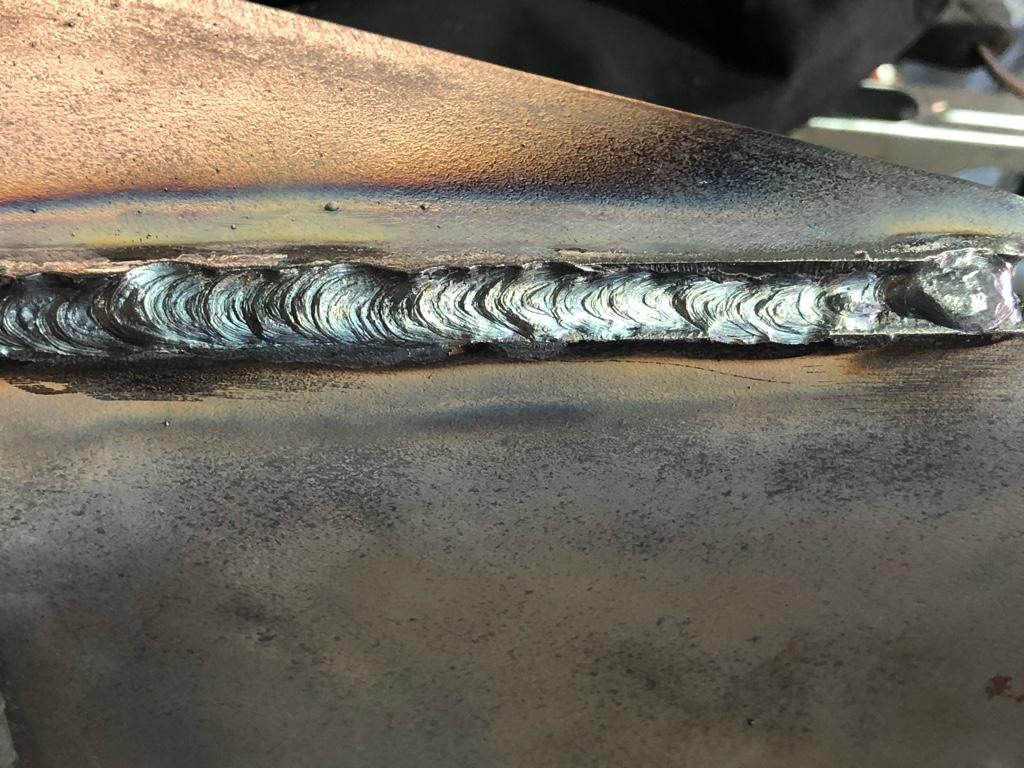Important Tips for Welders: Protecting Against Undercut Welding and Ensuring Stronger Weld Joints
In the realm of welding, accomplishing durable and solid weld joints is the keystone of creating top notch work. One typical challenge that welders often encounter is undercut welding, which can endanger the stability of the weld joint.

Comprehending Undercut Welding
Undercut welding is a common welding flaw that takes place when the weld steel stops working to effectively fill up the groove and results in a groove-like clinical depression along the weld grain. This flaw damages the weld joint, making it susceptible to breaking and failing under anxiety. Undercutting can be brought on by numerous variables, consisting of too much welding current, high welding speed, improper electrode angle, incorrect electrode dimension, and bad welding technique.
Among the primary factors for undercut welding is an imbalance between the welding current and the welding rate. If the welding current is expensive or the welding rate is also fast, the weld metal may not adequately fill up the groove, bring about damaging. Additionally, utilizing an electrode that is also big can result in a similar outcome, as the excess metal can not appropriately move right into the groove.
To avoid undercut welding, welders ought to ensure they are utilizing the right welding criteria, keep an ideal electrode angle, select the ideal electrode dimension, and technique proper welding techniques. By dealing with these aspects, welders can lessen the danger of undercutting and develop more powerful, extra dependable weld joints.
Proper Welding Technique
Efficient welding technique plays a crucial duty in making sure the quality and honesty of weld joints. One essential element of appropriate welding strategy is preserving the correct angle and range between the welding weapon and the workpiece.
In addition, a constant and steady hand motion is essential for creating solid and resilient weld joints. Welders need to go for smooth, consistent motions to ensure also circulation of the weld material. Appropriate manipulation of the welding weapon and filler product is likewise vital to accomplishing optimal infiltration and fusion.
Moreover, controlling the warm input and picking the suitable welding criteria based on the product being welded are important elements in accomplishing top quality welds - Preventing weld undercut. Welders must adhere to the advised settings supplied by welding treatment specifications and change them as required based upon the specific demands of the project. By grasping correct welding techniques, welders can substantially boost the strength and dependability of their weld joints
Selecting the Right Electrode
When considering the importance of selecting the right electrode in welding applications,Preserving the right angle and range in between the welding weapon and the work surface is fundamental. The choice of electrode plays a vital duty in determining the high quality and stamina of the weld joint. Electrodes are available in different types, each developed for certain functions and materials.
First of all, choosing the suitable electrode diameter is vital. Thinner electrodes are appropriate for welding thin materials, while thicker electrodes are better for thicker materials and higher warmth applications. Matching the electrode size to the density of the workpiece helps achieve a balanced weld.
Second of all, understanding the product make-up of the electrode is essential. Different electrodes are developed for welding particular materials like steel, stainless steel, aluminum, or cast iron. Making use of the correct electrode product ensures excellent blend and lessens the danger of problems in the weld.
Lastly, considering the welding placement and strategy is critical when choosing the electrode kind. For circumstances, specific electrodes are better matched for overhead or upright welding settings, while others work well for level or straight positions. Picking the best electrode based upon the welding method enhances the total weld high quality and honesty.
Preparing the Base Metal
To make certain a look what i found successful welding procedure, what first steps should be taken when preparing the base metal for welding? In addition, any existing weld material or residue from previous welding must be removed to make sure a tidy surface area for the new weld.

Carrying Out Post-Weld Evaluations

After carrying out these evaluations, welders should compare the outcomes versus market requirements and project requirements to ensure that the weld joint fulfills all essential standards. Any type of variances or inadequacies uncovered throughout the post-weld examination must be immediately dealt with through ideal restorative steps to assure the weld's stability. By vigilantly carrying out post-weld assessments and without delay attending to any concerns, welders can maintain the quality and integrity of their work, inevitably contributing to the safety and security and durability of the welded frameworks.
Conclusion

To conclude, avoiding undercut welding and making certain stronger weld joints call for a mix of appropriate welding strategy, selecting the appropriate electrode, preparing the base metal appropriately, and conducting post-weld examinations. By understanding the root causes of undercut welding and implementing the necessary preventative measures, welders can produce high-grade weld joints that satisfy sector standards and make sure the architectural integrity of the bonded parts.
Undercut welding is a typical welding issue that occurs when the weld steel falls short to correctly load the groove and results in a groove-like depression along the weld bead (Preventing weld undercut). Damaging can be caused by different aspects, consisting of excessive welding present, high welding rate, inappropriate electrode angle, incorrect electrode size, and bad welding technique
One of the primary factors for undercut welding is an inequality in between the welding current and the welding speed. If the welding current is as well high or the welding rate is also quickly, the weld steel may not appropriately fill the groove, leading to undercutting.Maintaining the appropriate angle and distance in between the welding weapon and the work surface is basic when considering the value of picking the appropriate electrode in welding applications.